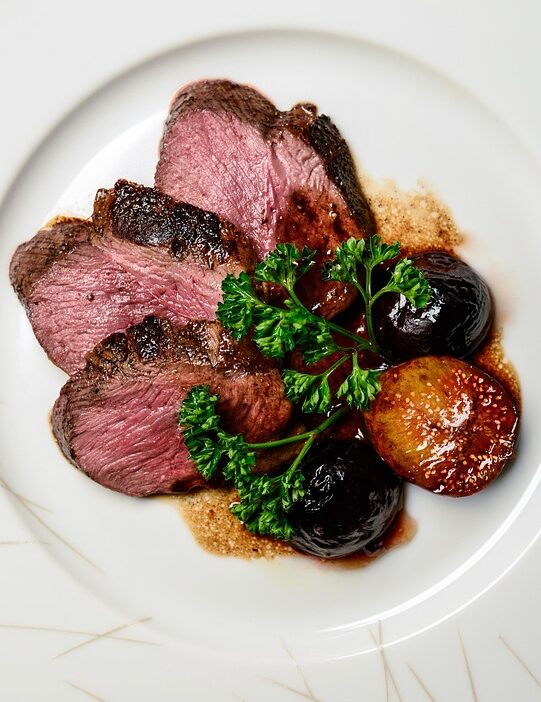From Farm to Fork: Seasonal Ingredients for Your Main Course
In an era where food sustainability and health consciousness are at the forefront of culinary discussions, the phrase "from farm to fork" has taken on new meaning. This farm-to-table movement not only celebrates local agriculture but also emphasizes the importance of eating seasonal ingredients. By choosing produce and protein that align with the seasons, you can elevate your main courses while supporting local farmers and reducing your carbon footprint. Let’s explore how to make the most of seasonal ingredients for your next main dish.
Understanding Seasonal Ingredients
Seasonal ingredients refer to the fruits, vegetables, grains, and proteins that are harvested at their peak quality in a given season. Eating seasonally ensures that you’re enjoying food at its freshest and most flavorful state. The benefits include superior taste, better nutritional value, and positive environmental impacts.
Why Choose Seasonal?
-
Flavor and Nutritional Value: Produce that’s in-season is usually picked at peak ripeness and delivered quickly to markets. This results in more intense flavors and higher nutrient content compared to out-of-season options that may have been picked early to withstand transportation.
-
Sustainability: Seasonal eating reduces the demand for greenhouse-grown produce, which often requires more energy and resources. Local sourcing minimizes transportation emissions, benefiting the planet.
-
Economic Support: Supporting local farmers and markets helps to invigorate the local economy. When you buy seasonal ingredients, you’re also investing in your community.
- Cost-Effective: Seasonal ingredients often come at a lower price because they’re abundant and require less transportation, making it easier to create delicious meals without breaking the bank.
Seasonal Ingredient Guide
Here’s a brief guide on some seasonal ingredients to consider throughout the year, along with ideas for main courses:
Spring (March to May)
- Ingredients: Asparagus, peas, radishes, artichokes, spring lamb, and salmon.
- Main Course Ideas: Grilled spring lamb chops served with garlic mashed potatoes and a side of sautéed asparagus; a fresh pea and mint risotto topped with seared salmon.
Summer (June to August)
- Ingredients: Tomatoes, zucchini, bell peppers, corn, blueberries, and stone fruits.
- Main Course Ideas: Ratatouille served with grilled chicken; BBQ corn on the cob alongside a vibrant tomato salad and herb-marinated steak.
Fall (September to November)
- Ingredients: Pumpkins, squash, apples, brussels sprouts, and turkey.
- Main Course Ideas: Roast turkey with cranberry sauce and a side of roasted butternut squash; a hearty pumpkin risotto topped with crispy brussels sprouts.
Winter (December to February)
- Ingredients: Root vegetables, citrus fruits, kale, and hearty fish like cod.
- Main Course Ideas: Slow-cooked root vegetable stew with cod; citrus-braised kale served alongside roasted chicken.
Tips for Cooking with Seasonal Ingredients
-
Visit Local Farmers’ Markets: These markets offer a variety of seasonal ingredients, often harvested just the day before. Engage with local farmers to understand what’s available and learn about their farming practices.
-
Plan Meals Around Ingredients: Look at what’s in season when planning your weekly meals. Creating dishes based around these ingredients can inspire creativity in the kitchen.
-
Experiment with Preservation: Consider canning, pickling, or freezing seasonal produce to enjoy these flavors year-round. This not only reduces waste but enriches your pantry.
-
Be Flexible: Experiment with what’s available. If a recipe calls for an ingredient that isn’t in season, be open to substituting with something that is.
- Educate Yourself: Learn about the seasonal cycles of various ingredients in your region. Knowing when to expect your favorite ingredients can help in meal planning.
Conclusion
Embracing seasonal ingredients is not only a culinary choice but a lifestyle that nurtures our connection to the earth and our local communities. By implementing the farm-to-fork philosophy in your cooking, you can create vibrant, delicious, and sustainable main courses that celebrate the unique bounty of each season. So next time you plan your meals, take a moment to look outside: what does your local landscape have to offer? Your taste buds, your body, and your community will thank you.



